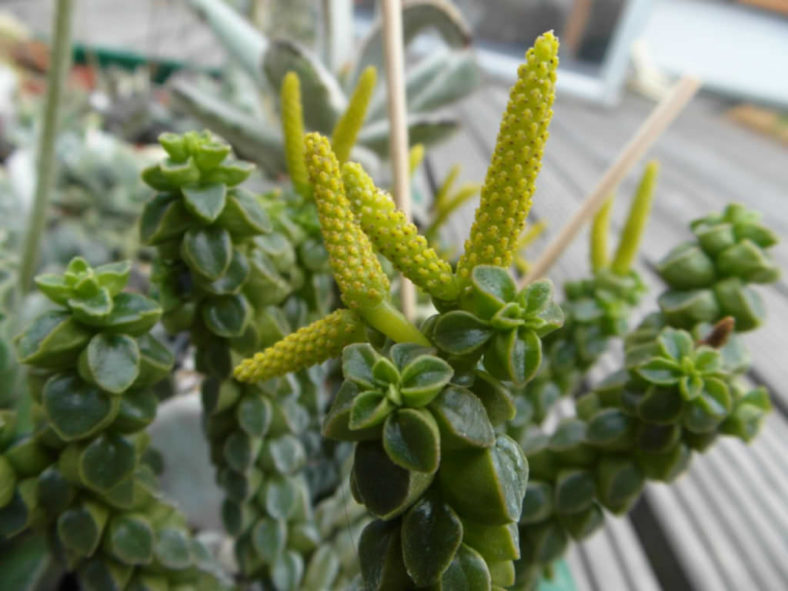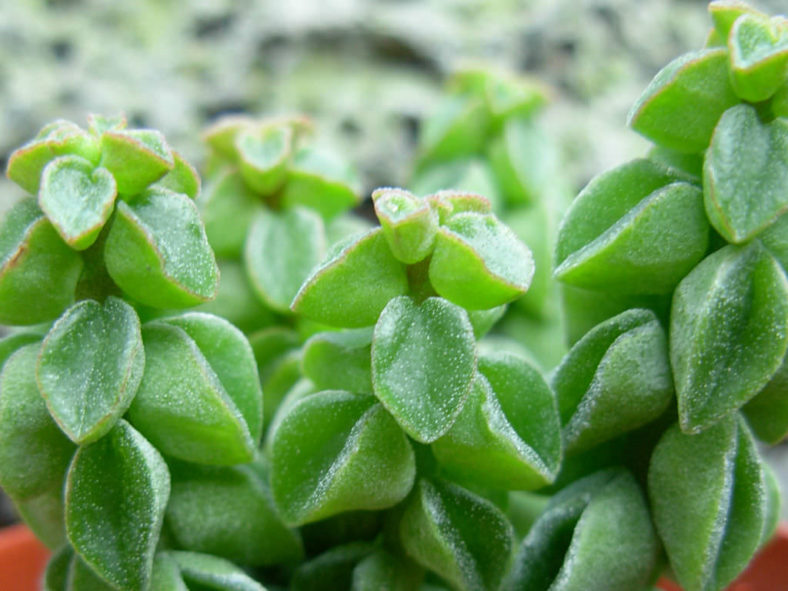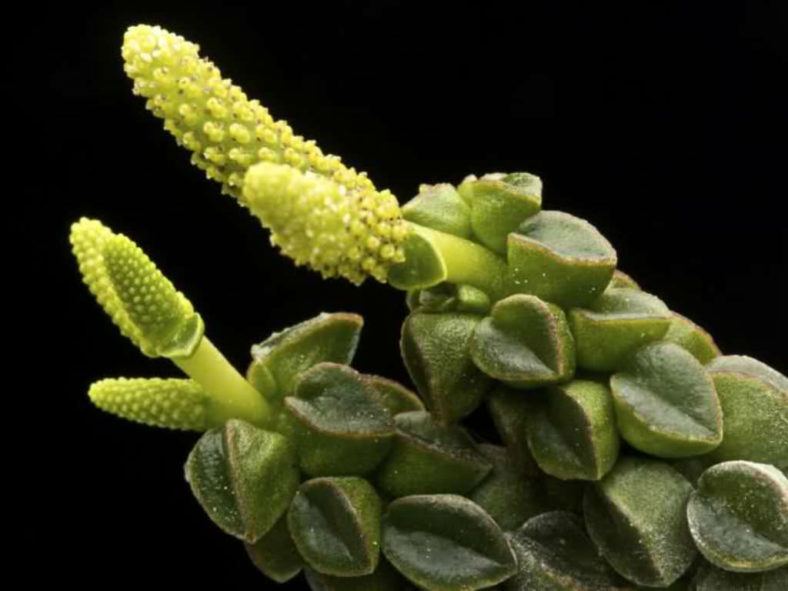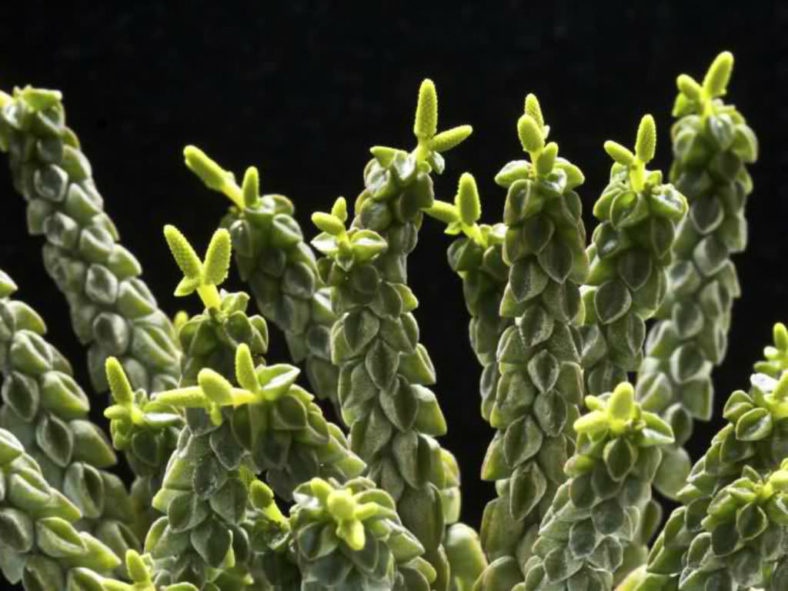Scientific Name
Peperomia columella Rauh & Hutchison
Common Name(s)
Columnar Peperomia
Scientific Classification
Family: Piperaceae
Genus: Peperomia
Etymology
The specific epithet "columella" (pronounced "kol-um-EL-luh") means "a small column or pillar" and refers to the tight arrangement of the leaves around the stem of this species, forming a small column.
Origin
Peperomia columella is endemic to Peru. It grows at elevations between 4,690 and 5,170 feet (1,430 and 1,575 m) in dry areas, often in crevices on cliffs or in sandy soil.
Description
Peperomia columella is a highly branched succulent with fleshy, ascending stems densely covered with bright green leaves with epidermal windows at the upper surface. The stems can grow up to 8 inches (20 cm) tall and 0.4 inches (1 cm) in diameter, branching from the base. The leaves are thick and fleshy, truncated, and U-shaped in cross-section. They can measure up to 0.5 inches (1.2 cm) in length, 0.3 inches (0.7 cm) in width, and 0.25 inches (0.6 cm) in thickness. The "window" on the leaves comprises water-storing tissue that allows light penetration to the interior photosynthetic tissue.
The tiny, yellow flowers appear in spring in terminal inflorescences with 2 to 5 branches.

How to Grow and Care for Peperomia columella
Hardiness: USDA hardiness zones 10a to 11b: from 30°F (-1.1°C) to 50°F (10°C).
Peperomias are not particularly hard plants to grow, and their small size and delicate leaves make them perfect for desktops and dish gardens. They will rarely overtake their neighbors or shade them out. In short, they are perfectly mannered and attractive little plants. The biggest problems are usually related to watering. They like steadily moist soil but can be very sensitive to overwatering. Overwatered Peperomias tend to wilt or have raised, scab-like protrusions on their leaves. Do not be alarmed if your plant loses a few bottom leaves, but a massive leaf drop is usually due to a temperature change or a fertilizer problem. Lastly, Peperomias are susceptible to mealybugs, so watch for cottony white masses on leaves' stems or undersides. These plants thrive when slightly pot-bound, so do not overpot them.
Repot plants in spring, especially to refresh the existing soil, but place them either back into the same-size container after root-pruning or into a container only one pot size larger. The largest Peperomias remain relatively small and will never grow into large specimen plants. Most species can be relatively easily propagated from leaf cuttings.
Learn more at How to Grow and Care for Peperomia.
Links
- Back to genus Peperomia
- Succupedia: Browse succulents by Scientific Name, Common Name, Genus, Family, USDA Hardiness Zone, Origin, or cacti by Genus
Photo Gallery
Click on a photo to see a larger version.


